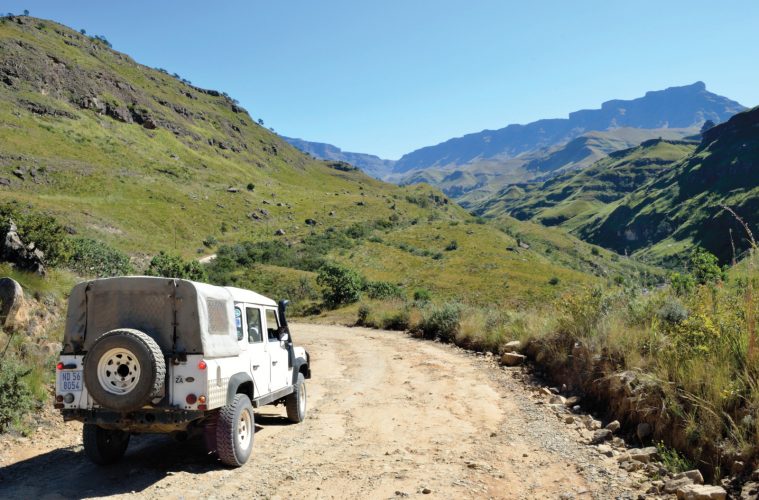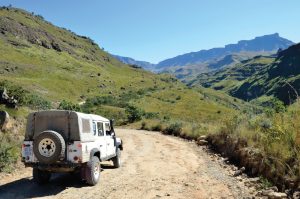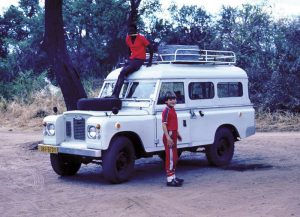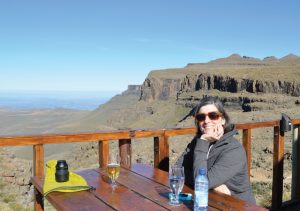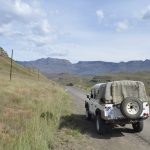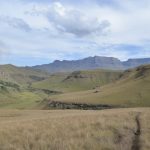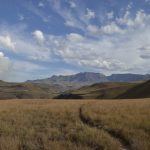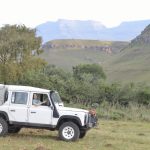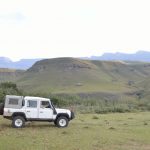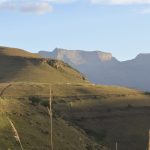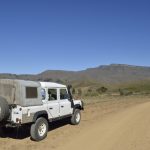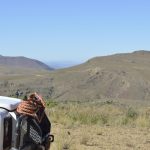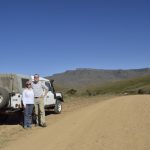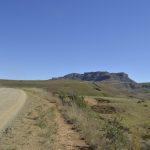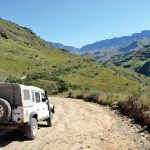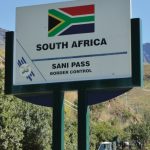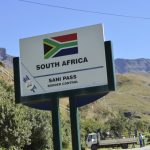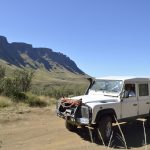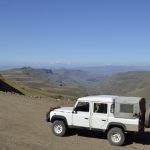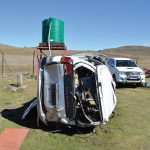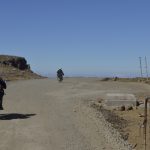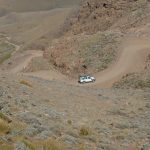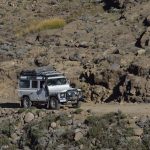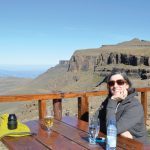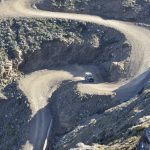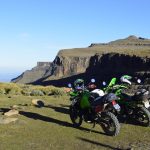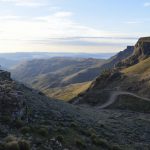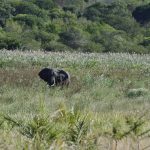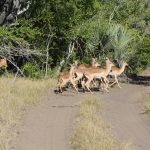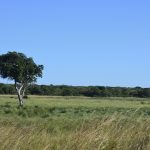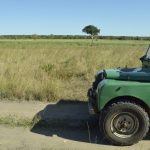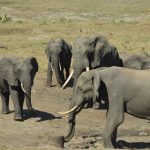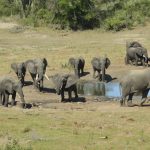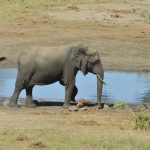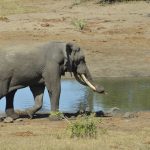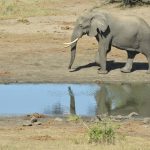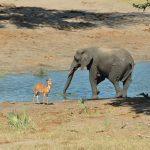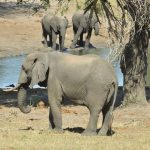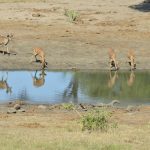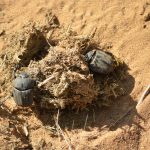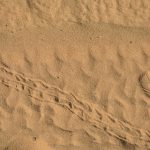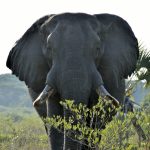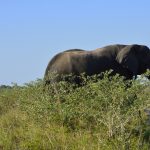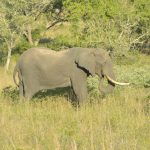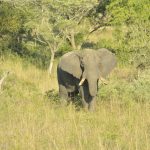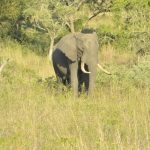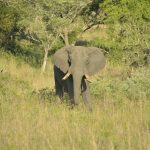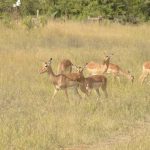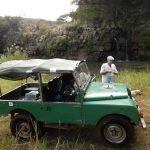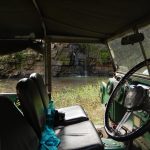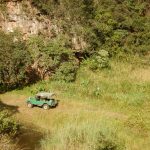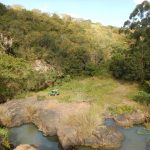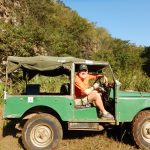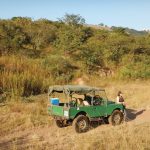Many Land Rover enthusiasts can recall “the moment” that experience that lit a fire in their hearts for these British 4x4s. Mine was at age six. At our home in Harare, Zimbabwe, my parents presented me with a serious choice. “Nicholas, we’re taking a trip to Botswana for two weeks to drive across the Kalahari Desert. If you come it will be hot and uncomfortable, there won’t be any other kids, and you might hate it. But it could be a great adventure. If you don’t want to come, you can stay here with your grandparents who will spoil you rotten.” It was an easy decision. I climbed into the 1971 Series II-A 109” and stamped memories of that journey into family legend.
In 1998-99, fresh out of college, I lived in South Africa, traveling around the region and working as a whitewater rafting guide. In the spring of 2015, I finally made my return journey. I didn’t have a highly planned agenda, but a few important goals guided the trip: introducing my wife, Jenna, to the country, revisiting some familiar places, and exploring new areas—and do as much as possible of all that in a Land Rover.
I wanted particularly to go back to South Africa to feel its magic. It is a land of breathtaking physical beauty, its people are warm and hospitable, and experiencing the country changes your perspective on life. South Africa is also a land of stark contrasts: opulent wealth alongside abject poverty, cutting-edge technology curtailed by electricity blackouts, and a hopeful young democracy beset by a host of sys- temic problems. With all its marvels and struggles, South Africa feels like home to me.
After a varied week in Cape Town, we flew to Durban, my onetime hometown. Picking us up from the airport was my friend Kenneth Jones, Trip Coordinator for the KwaZulu-Natal Land Rover Owners Club. We rode into town through the lush sugarcane fields in his 1956 Series I. Kenneth had generously offered to loan us the least remarkable of his five Land Rovers, a 2004 Defender 110 TD5 double cab.
Jenna and I immediately set off for the Midlands, a scenic region at the base of the Drakensberg escarpment. For three days we explored the winding back roads, hiked in the foothills, met local artisans, and stayed at The Bend country lodge. A throwback to another era, this stately manor was reminiscent of Downton Abbey.
From the Midlands we ventured up into the quiet mountain kingdom of Lesotho. The most accessible route is via Sani Pass, a craggy breach in the fortress of the Drakensberg. A steep, primitive track carved into the rocky slopes ascends to the pass—with no guardrails. Low range second gear brought us to the border post without drama, catching our breath at 9,300 feet. Wreckage of a destroyed vehicle was a sobering reminder of the route’s hazards.
Sani Lodge was warm and welcoming amid the wind-raked desolation. A delicious dinner in the company of fellow adventurers was a treat and we kept cozy in our thatched rondavel until the morning sun warmed the cliffs. We wished we had more time to enjoy Lesotho’s stark beauty, but we had to be back in Durban to prepare for the next leg of our journey, Tembe Elephant Park.
Tucked into the northeast corner of KwaZulu-Natal, the park is unknown even to most locals. The KZN Land Rover Club had special permission to venture into restricted areas of the park, stay with the rangers in their secluded bush camp, and drive our own vehicles— privileges never extended to the general visitor.
I have spent a lot of time in game parks across Africa and my Tembe experience was one of the best.
Home to 220 elephants and 40 lions, Tembe covers about 300 square kilometers. The park is largely sand forest interspersed with open plains and marshland. Over four days, the club explored the soft tracks in groups of one or two vehicles, in search of wildlife. My wife and I spent a day riding with Kenneth and his daughter in his Series 1. With no sides and the doortops off, we felt almost part of the landscape. It was the quintessential Land Rover experience—deep in the bush, among friends, and watching the majestic animals in their natural habitat.
Jenna and I had our own close encounter one afternoon, piloting the Defender through the northern restricted reaches of the park. A lone bull elephant walked slowly towards us in silence, passed within 30 feet of our Rover, and settled in for some tasty foliage on the other side of the track. It was a magical moment in the presence of this graceful creature.
All too soon we left for Durban, but Kenneth had another surprise in store. Once again we piled into his Series 1 and he took us to his favorite local 4×4 trail near Shongweni. Through streams and up rocky embankments we crawled to reach a beautiful amphitheater with a waterfall splashing into a pool. Jenna and I took turns driving. The strength, finesse, and coordination required to control the 60-year old Landy through that terrain was surprising, and gave me a new appreciation for the amenities of my own Discovery 1 (like power steering and disc brakes).
The goals of our trip achieved, we have already started planning our next return. It will be a lot sooner than 16 years. The time spent in Kenneth’s Series Land Rover was a vivid intersection of past and present, tasting the dusty air and discovering the wilderness in much the same way as explorers did 60 years ago. The Series I is an enduring legacy to an age when there were still blank spots on the map.
Story, photography by Nicholas Bratton
Additional Images:
